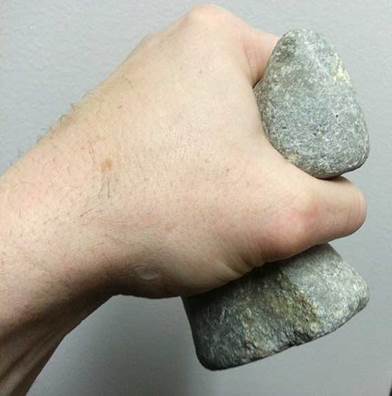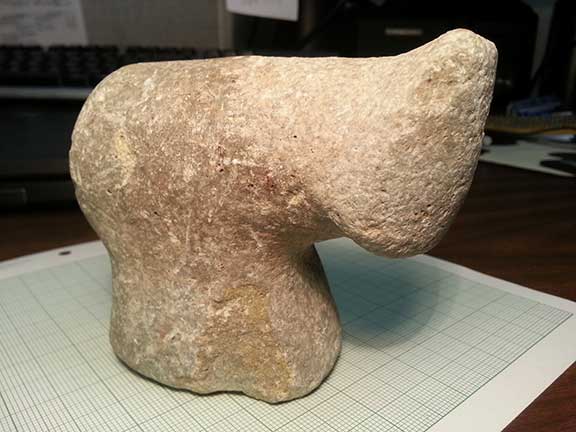|
Prehistoric Stone Maul Discovered at Starrigavin Slide Area SITKA, Alaska–In January 2015, Tongass National Forest Hydrologists Marty Becker and KK Prussian discovered an oddly weathered stone while collecting, sampling, and identifying rock samples in the Starrigavin
slide area. “I thought it was just a cool weathered rock and held it in my hand and started walking back down to KK,” said Becker. As I was walking, it suddenly hit me this thing is really comfortable and took a closer look at it, realized what I thought
it was, showed it to KK and got the same assumption from her.” What Becker and Prussian had found was confirmed by Forest Service Archaeologist Jay Kinsman as a prehistoric stone tool more succinctly a T-shaped hand maul. This type of stone tool is common in Northwest Coast Native Cultures extending
from the Columbia River to Yakutat. A tool of this type is akin to a prehistoric hammer or sledge hammer. This tool would have likely been used for driving wedges made of a softer material such as wood, antler, or sea-mammal along a cedar log to split off
planks. It is likely that the former owner of this maul was utilizing cedar for one of the many resources derived from it (planks) on the slopes above Starrigavin creek. The owner would have likely cached the maul and wedges for future use rather
than haul them back and forth with load of cedar planks. The artifact will become part of the permanent artifact collection of the Tongass National Forest. The Museum of the North is the curation facility that the Alaska Region uses to permanently curate collections.
The September 2014 landslides affected approximately 75 to 100 acres in Starrigavan Valley, about 10 miles from Sitka.
For more information, call
Jay Kinsman at 907-747-4228 or email him at jkinsman@xxxxxxxxx.
This type of stone tool hammer was common in Northwest Coast Native Cultures
The maul shows minor signs of damage from being churned among the soil rocks and trees in the landslide. There are much older signs of damage to the maul likely from the time
of original use; one of the ears or tangs was broken off. There are also signs of use wear around the striking surface. For higher resolution photos, contact
cjlagodich@xxxxxxxxx
-end- This electronic message contains information generated by the USDA solely for the intended recipients. Any unauthorized interception of this message or the use or disclosure of the information it contains may violate the law and subject the violator to civil or criminal penalties. If you believe you have received this message in error, please notify the sender and delete the email immediately. |


